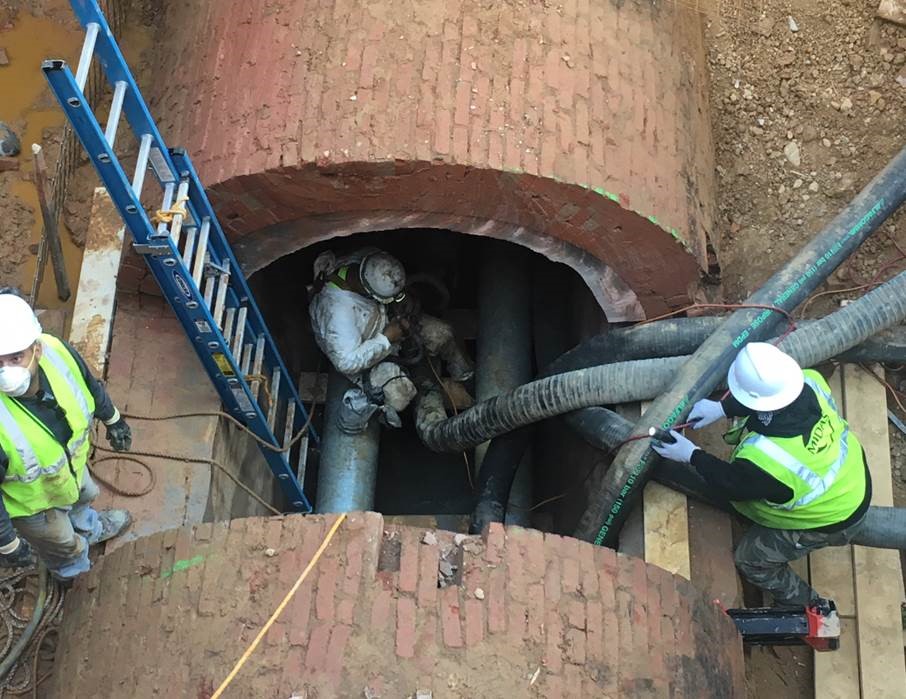Waste not, want not: A look inside DC’s first municipal heat exchange system

Construction at the net zero renovation of American Geophysical Union’s (AGU) headquarters is getting really exciting – assuming, like us, you now find work on a 125-year old sewer line to be the pinnacle of your interests. Despite the images (and smells) the word “sewer” brings to mind, it turns out we’re not the only ones interested in the complex systems running below our busy streets. NBC Washington recently published a story on the ways DC Water is using innovation and inventions to lower customers’ bills, featuring the municipal heat exchange system currently being implemented at AGU. The system is the first of its kind in the US, using utility access to “use the sewer’s natural heat and lower heating and cooling costs.”
The investigation shares DC Water’s hopes that “other commercial customers will be interested in buying access to the sewer system to utilize [the new] technology,” and we have to admit that we’re completely on board. Despite the upfront investment required to make access possible, implementing municipal heat exchange systems throughout the District would help reduce the amount of energy used by buildings in the nation’s capital, and help reduce energy costs for building owners.
Sound too good to be true? Fortunately for us, and your future energy bill, it’s not. And in the coming years, AGU will serve as an example of the system’s potential impact, tracking and sharing energy data openly for all to see and learn from. In the meantime, we’ll get you started by covering the basics.
How does it work?
AGU’s updated building systems will tap into the 1890s-era sewer line, diverting wastewater to a settling tank in a ‘wet well’ located just outside of their building at the intersection of Florida and 20th Streets NW. The debris-less water will then be circulated into a sewer heat exchange system that will live in the building’s underground garage. This is where the radiant fluid for the building will be pre-heated or cooled before being circulated throughout the building. Fear not, it is a closed loop system. The murky water will be returned back to the sewer.
Using this strategy, AGU is able to maximize the efficiency of their building’s mechanical systems. So much so that there will be periods during the year where the building will operate in a ‘free cooling‘ mode and the building’s chiller will not be needed to provide supplemental cooling.
Why is this important?
All of this helps reduce AGU’s energy consumption, maximizes the resources on site, and helps the mission-driven organization reach its goal of a net zero energy headquarters.
Fun fact
Using the bathroom uphill from Florida Avenue will help cool the building – AGU thanks you in advance for your support.
Below are some photos of the sewer, located about 30’ below grade in Dupont Circle. All of those pipes and pumps are to re-route the um, flow, while work is underway.



While the first system of its kind to be implemented in the US, the municipal heat exchange is not the only “first” for this project. When complete, AGU will become the first net zero commercial renovation in the nation’s capital.
Want to learn more? Check out this video featuring AGU team member and Managing Principal for Interface Engineering, Roger Frechette. You can find more videos like this, and stay up to date on the latest construction updates from this ground breaking project, by visiting Building AGU.
